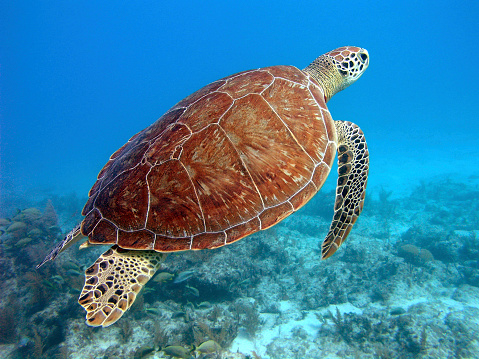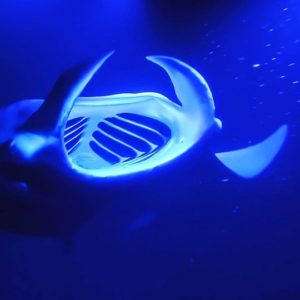Although green turtles swim in nearly all the world’s oceans, nest on sandy beaches around the globe, and migrate vast distances between feeding and breeding areas, a curious population of green turtles calls only the Hawaiian Islands home.
One of the longest-running monitoring and conservation projects in the world for sea turtles has tracked the fall and rise of this distinctive population amid an array of human threats. In recent decades, scientists have discovered that these abundant green turtles—favorites of divers, surfers, snorkelers, tourists, and locals—belong to a relatively small, endemic, and growing population whose members are born, grow up, and reproduce solely within the Hawaiian Islands. Like other residents in this tropical paradise, the native greens exhibit the distinctly human behavior of hauling out on beaches to soak up the warm Hawaiian sun.
All the green turtles that nest and feed throughout the Hawaiian archipelago belong to the same lineage: they do not share any substantial genetic links with other green turtle populations in the Pacific Ocean, although occasionally some turtles from the East Pacific stock that nest in the American Pacific are recorded in Hawaiian waters. This fact makes Hawaiian greens a unique subset of the greater global population or, as scientists like to call them, a Distinct Population Segment or Regional Management Unit. The geographic isolation of the Hawaiian greens means that they are at greater conservation risk because they do not intermix with other stocks in the Pacific; thus, any population declines are unlikely to be compensated for by immigration from other populations.
Although there is no reliable way to know what the population might have looked like hundreds of years ago (mostly because no one thought of counting them back then), Hawaiian turtles, or Honu as they are known to native Hawaiians, have been an important part of Hawaiian culture. They feature prominently in mythology and petroglyphs and are revered as personal totems and guardians, or aumakua. Ancient Hawaiian people hunted turtles, and turtle meat was an important food resource managed through ali’I, or royalty-controlled hunting programs. Turtle shells and bones were used as tools, fishing hooks, and personal ornaments.
The multiple uses and important roles that Honu have played in Hawaiian culture suggest that there were substantial numbers in the past.
The arrival of western culture in the 1600s brought increased exploitation of sea turtles. Particularly during the past two centuries, large numbers of green turtles were harvested throughout the island chain, often destined for the soup pot. Laws now prohibit hunting, injuring, or harassing sea turtles or holding them in captivity (at least without a special permit). Violations can bring hefty fines and prison time, and as a result, the population has been on the rise in recent decades. Presently, more than 90 percent of nesting activity in the archipelago occurs within French Frigate Shoals, a National Wildlife Refuge administered by the U.S. Fish and Wildlife Service, while foraging turtles can be found in coral reef and coastal habitats throughout the islands.
In addition to harvest, the Hawaiian greens came under the negative effect of a mysterious disease that first appeared in the 1930s, that peaked in the 1980s and 1990s, and that severely debilitated and often killed turtles. Infected turtles developed lobe-shaped tumors caused by the fibropapilloma virus, or FP, which afflicts most soft portions of the body—primarily on the skin. Moreover, it can also appear between scales and scutes, in the mouth, on the eyes, and even on internal organs. However, continuous research and monitoring efforts have provided an encouraging outlook: Turtles, particularly larger ones, can recover from FP infections, and the frequency of FP infections in Hawaii is declining. Therefore, although turtles today still exhibit FP symptoms, the severity of the threat to the overall population has substantially diminished. Although abundance is probably lower than before western-origin impacts, the Hawaiian green turtle population is growing consistently— thanks to a combination of legal protection for turtles and their habitats, the virtual cessation of traditional hunting, and the remission of FP. The Hawaiian green is one of those rare examples of recovery where societal concern and legal governance came together and reversed the declining trend. Today, Hawaiian green turtles face a promising future, and serve as an example of the might of human effects on nature—both negative and positive.








